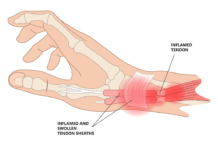Disclosure: This quiz is sponsored content from Septodont as part of our sponsored partner program.
To learn more about Septodont’s formulation of articaine, Septocaine, click here.
Test Your Articaine vs. Lidocaine Knowledge
1. Both articaine and lidocaine are metabolized primarily in the liver.
Many local anesthetics, such as lidocaine, are metabolized primarily in the liver, whereas 90% of articaine is metabolized via hydrolysis of the ester side chain in the plasma and excreted via the kidneys. The remaining 10% is metabolized in the liver. Articaine has a thiophene ring and an ester side chain allowing it to be quickly metabolized systemically by inactivation through hydrolysis of the ester side chain.
Martin, E., Nimmo, A., Lee, A., Jennings, E. Articaine in Dentistry: An Overview of the Evidence and Meta-analysis of the Latest Randomised Controlled Trials on Articaine Safety and Efficacy Compared to Lidocaine for Routine Dental Treatment. BDJ Open. 2021; 7: 27. https://doi.org/10.1038/s41405-021-00082-5
2. Artcaine has been found to be 1.5 times more successful in achieving anesthesia than lidocaine for mandibular blocks. Articaine is less cytotoxic than lidocaine.
A meta-analysis published in 2021 found articaine was superior in reaching anesthetic success compared to lidocaine. Articaine was found to be 1.5 times more successful than lidocaine for mandibular blocks and 2.78 times more successful than lidocaine in both maxillary and mandibular infiltrations.1
An in vitro study has shown that articaine is less cytotoxic than lidocaine. The study concludes that their findings suggest articaine is the least neurotoxic of all the local anesthetics included in the study (in SH-SY5Y cells in vitro).2
1. Martin, E., Nimmo, A., Lee, A., Jennings, E. Articaine in Dentistry: An Overview of the Evidence and Meta-analysis of the Latest Randomised Controlled Trials on Articaine Safety and Efficacy Compared to Lidocaine for Routine Dental Treatment. BDJ Open. 2021;7: 27. https://doi.org/10.1038/s41405-021-00082-5
2. Malet, A., Faure, M.O., Deletage, N., et al. The Comparative Cytotoxic Effects of Different Local Anesthetics on a Human Neuroblastoma Cell Line. Anesthesia and Analgesia. 2015; 120(3): 589-596. https://doi.org/10.1213/ANE.0000000000000562
3. Which of the following local anesthetics has the shortest half-life?
Articaine has the shortest elimination half-life of all local anesthetics. For comparison, articaine's elimination half-life is around 27-42 minutes, while lidocaine's elimination half-life is 90 minutes. This contributes to the assertion that articaine is less toxic than lidocaine.
Luo, W., Zheng, K., Kuang, H., et al. The Potential of Articaine as New Generation of Local Anesthesia in Dental Clinics: A Review. Medicine. 2022; 101(48): e32089. https://journals.lww.com/md-journal/Fulltext/2022/12020/The_potential_of_articaine_as_new_generation_of.18.aspx
4. What year was articaine approved for use in the United States?
Local anesthetic in the form of cocaine was first used in 1859 for ophthalmic surgery. However, many adverse events led to the need to develop a safer alternative. In 1905, procaine (Novocain) was developed and used for over 40 years before other local anesthetics were developed. Lidocaine was marketed in 1948, followed by mepivacaine (1957), prilocaine (1960), bupivacaine (1963), and articaine (1975).1 Though articaine has been used since 1975 in Europe, it wasn't approved for use in the U.S. until April 3, 2000.2 Under the trade name Septocaine, Septodont was the first manufacturer to bring articaine to the U.S. market.
1. Singh, P. An Emphasis on the Wide Usage and Important Role of Local Anesthesia in Dentistry: A Strategic Review. Dental Research Journal. 2012; 9(2): 127-132. https://www.ncbi.nlm.nih.gov/pmc/articles/PMC3353686/
2. Drug Approval Package: Septocaine (Articaine Hydrochloride w/Epinephrine) Injection. (2000, April 3). U.S. Food & Drug Administration. https://www.accessdata.fda.gov/drugsatfda_docs/nda/2000/020971_SeptocaineTOC.cfm
5. There is no difference in the incidence of adverse events in children when comparing lidocaine and articaine.
The safety of articaine in pediatric patients has been well established. In a retrospective study published over 30 years ago, in 1989, the authors determined articaine was safe to use in children under the age of four. Furthermore, a study published in 2018 found no difference between lidocaine and articaine regarding adverse events in children.
Tortamano, I.P., Siviero, M., Lee, S., et al. Onset and Duration Period of Pulpal Anesthesia of Articaine and Lidocaine in Inferior Alveolar Nerve Block. Brazilian Dental Journal. 2013; 24(4): 371-374. https://doi.org/10.1590/0103-6440201302072
6. What is the main concern often raised by dental professionals about the use of articaine?
The biggest concern often raised by dental professionals is the risk of paresthesia which was attributed to articaine in a retrospective study published many years ago. Since then, several studies have found this concern to be unfounded. Malamed et al. reported on three identical randomized double-blinded clinical trials comparing efficacy and safety between articaine and lidocaine and found that paresthesia occurred at the same rate in both the articaine and the lidocaine groups (1%). This prospective study and others further support the assertion that articaine does not have a higher risk of paresthesia when compared with other local anesthetics.
Malamed, S.F., Gagnon, S., Leblanc, D. Articaine Hydrochloride: A Study of the Safety of a New Amide Local Anesthetic. Journal of the American Dental Association. 2001; 132(2): 177-185. https://www.researchgate.net/publication/12112958_Articaine_hydrochloride_A_study_of_the_safety_of_a_new_amide_local_anesthetic
7. The cause of paresthesia when administering mandibular injections has been attributed to anatomical variations and injection technique of the clinician.
A study published in 2018 suggested the clinician's injection technique or the lingual nerve's location likely caused paresthesia and not the neurotoxicity or concentration of the anesthetic.
There are multiple studies that have identified anatomical variations among individuals that may predispose them to paresthesia, such as the location of the lingual nerve. Using current injection techniques, a study evaluated nerve location in cadavers and the risk of penetrating the nerve. The study found 4.5% of the cadavers would have experienced paresthesia simply due to the location of their lingual nerve.
Ahmad, M. The Anatomical Nature of Dental Paresthesia: A Quick Review. The Open Dentistry Journal. 2018; 12: 155-159. https://doi.org/10.2174/1874210601812010155
















